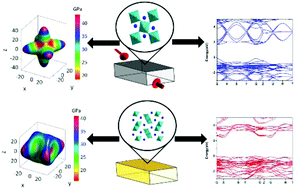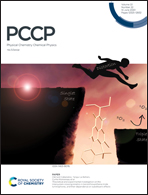Elastic and electronic origins of strain stabilized photovoltaic γ-CsPbI3†
Abstract
All-inorganic cesium lead triiodide (CsPbI3) perovskite has been widely researched due to its outstanding photovoltaic properties. At room temperature, there are two orthorhombic CsPbI3 phases (black γ-CsPbI3 perovskite and yellow δ-CsPbI3 non-perovskite). In this study, these two polymorphic structures have been studied via density functional theory calculations in respect to their electronic and elastic properties. Our calculation results give full mapping of Young's moduli of the γ-CsPbI3 structure for all crystallographic orientations, which reveal that the optimum directions for stabilizing the γ-CsPbI3via strain are approximately along 〈012〉. Moreover, we found that these two polymorphs have distinct stiffness along respective octahedral chains due to their different kinds of octahedral connections. Furthermore, the calculated band structures and density of states disclose that both phases have direct bandgaps, and the bandgap of δ-CsPbI3 is much wider due to its weak Pb 6p–I 5p antibonding coupling in the conduction band and low octahedral connectivity. Our findings provide fundamental elastic and electronic insights which are instructive for strain engineering of photovoltaic γ-CsPbI3.



 Please wait while we load your content...
Please wait while we load your content...